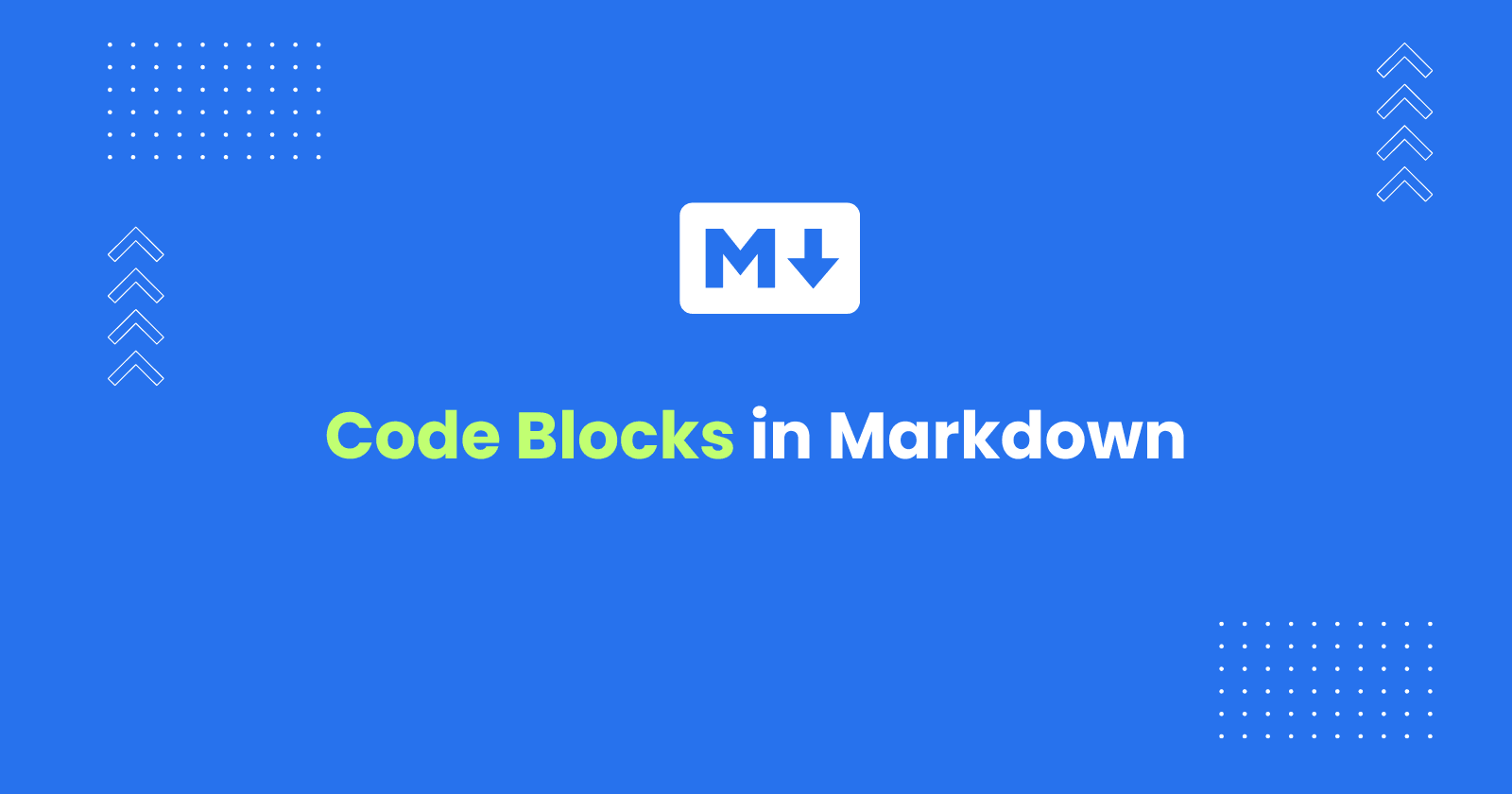Markdown Code block's basic and advanced syntaxes
- Published on
- • 3 mins read

Markdown code blocks are extremely useful for displaying formatted code snippets with syntax highlighting. Here's a comprehensive guide to the basic and advanced features of Markdown code blocks.
Basic Syntax
To create a code block in Markdown, use triple backticks (```) followed by the language you want to highlight.
```language
your code goes here
#### Example:
function debounce(func, timeout = 300) {
let timer
return (...args) => {
clearTimeout(timer)
timer = setTimeout(() => {
func.apply(this, args)
}, timeout)
}
}
This will appear as:
```javascript
function debounce(func, timeout = 300) {
let timer;
return (...args) => {
clearTimeout(timer);
timer = setTimeout(() => { func.apply(this, args); }, timeout);
};
}
Adding a Filename
You can add a filename label to the top of your code block by appending :filename.ext after the language name.
Example:
```java:GetRowValue.java
private String[] getRowValue(Integer i, List<BillDetail> billDetail) {
String[] rowValue = new String[5];
rowValue[0] = (i).toString();
i = i - 1;
rowValue[1] = billDetail.get(i).getProductName();
rowValue[2] = billDetail.get(i).getQuantity().toString();
rowValue[3] = new DecimalFormat("#,###").format(Integer.parseInt(billDetail.get(i).getProductPrice()));
rowValue[4] = new DecimalFormat("#,###").format(billDetail.get(i).getSubTotal());
return rowValue;
}
This will appear as:
```java:GetRowValue.java
private String[] getRowValue(Integer i, List<BillDetail> billDetail) {
String[] rowValue = new String[5];
rowValue[0] = (i).toString();
i = i - 1;
rowValue[1] = billDetail.get(i).getProductName();
rowValue[2] = billDetail.get(i).getQuantity().toString();
rowValue[3] = new DecimalFormat("#,###").format(Integer.parseInt(billDetail.get(i).getProductPrice()));
rowValue[4] = new DecimalFormat("#,###").format(billDetail.get(i).getSubTotal());
return rowValue;
}
Line Highlighting and Line Numbers
Markdown also allows you to highlight specific lines in your code block and show line numbers.
- Use
{numbers}after the language to highlight specific lines. - Use
showLineNumbersto display line numbers in the block.
Example:
```html {1,4-6,10} showLineNumbers
<!DOCTYPE html>
<html lang="en">
<head>
<meta charset="UTF-8">
<meta name="viewport" content="width=device-width, initial-scale=1.0">
<meta http-equiv="X-UA-Compatible" content="ie=edge">
<title>Hello world</title>
</head>
<body>
<h1>Hello world</h1>
</body>
</html>
This will appear as:
```html {1,4-6,10} showLineNumbers
<!DOCTYPE html>
<html lang="en">
<head>
<meta charset="UTF-8" />
<meta name="viewport" content="width=device-width, initial-scale=1.0" />
<meta http-equiv="X-UA-Compatible" content="ie=edge" />
<title>Hello world</title>
</head>
<body>
<h1>Hello world</h1>
</body>
</html>
Additional Tips
- Indentation: Be careful with indentation in your code blocks. Incorrect indentation may break the formatting, especially in languages like Python or YAML.
- Code Block Customization: Depending on the Markdown editor or platform you use (e.g., GitHub, VS Code, Jekyll), some syntax options like line highlighting or filenames might require additional plugins or support.
Conclusion
Mastering Markdown code blocks can significantly improve how you present code in your documentation, README files, or blogs. By using advanced features like filenames and line numbers, you can make your code examples more informative and visually appealing.
Happy coding!